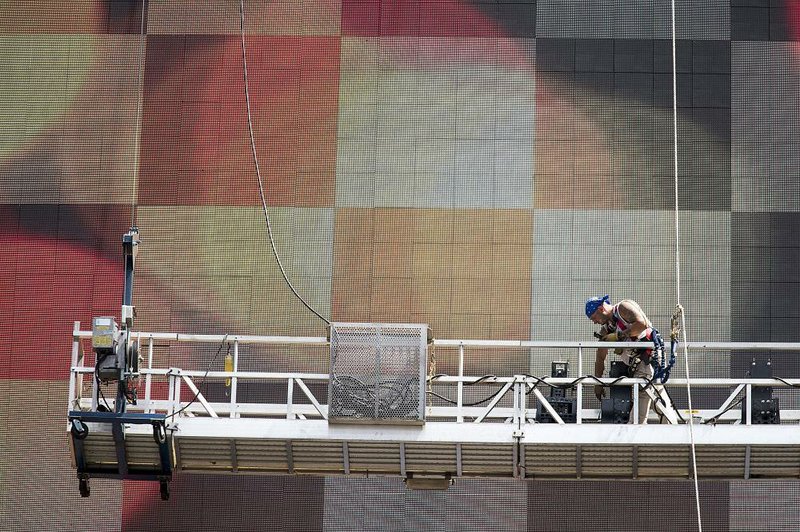WASHINGTON -- U.S. workers' productivity rose a bit more this spring than initially reported, but the gains were relatively weak and a key reason why recent economic growth has been modest.
The Labor Department said Thursday that productivity grew at a revised annual rate of 1.5 percent in the April-June quarter. That's up from an initial estimate of a 0.9 percent increase and comes after a slight 0.1 percent rate of increase in the first quarter. Labor costs increased at a rate of just 0.2 percent in the second quarter, a major drop-off from a 4.8 percent growth rate in the first quarter.
Productivity, the amount of output per hour of work, has been weak throughout the nine-year recovery. Many economists say this has stifled pay raises and broader economic growth.
In 2016, labor productivity declined for the first time in 34 years. It ticked down 0.1 percent. This followed a lackluster productivity increase of 1.3 percent in 2015.
Relative to 2009, productivity has been improving at annual average of roughly 1 percent. This modest gain has contributed to relatively sluggish economic growth overall, as gross domestic product has been increasing at about 2 percent in recent years. Growth is largely determined by two factors: the influx of new workers and how much gets produced for each hour worked.
Aides to President Donald Trump have said that corporate tax cuts will increase productivity, because they'll encourage companies to make new investments in capital goods that make workers more efficient. But most economists doubt that growth can hit the 3 percent target set by the president.
A second economic report Thursday said the number of people seeking U.S. unemployment benefits soared last week by the most in nearly five years, driven by Hurricane Harvey's impact on Texas and Louisiana.
Weekly applications for unemployment aid jumped 62,000 to a seasonally adjusted 298,000, reaching the highest level in two years, the Labor Department said Thursday. The less volatile four-week average rose to 250,250.
Applications soared by more than 51,000 in Texas, a five-fold increase, and ticked up 258 in Louisiana.
The number of Americans receiving unemployment benefits slipped 5,000 to 1.94 million. That's nearly 10 percent lower than a year earlier.
Americans who have lost jobs through no fault of their own can seek unemployment aid. Natural disasters can frequently cause spikes. Hurricane Sandy drove the last huge increase in applications in 2012.
Excluding the impact of the storm, the data suggest the job market remains healthy. Applications are a proxy for layoffs, and have hovered at historically low levels for two years. Many employers say they can't find qualified workers, which makes them less likely to cut their current staffs. As a result, Americans are enjoying a high degree of job security.
Americans' confidence eased from a 16-year high last week, though relatively high optimism should continue to support spending, according to Bloomberg Consumer Comfort Index figures released Thursday.
The consumer comfort measure fell to 52.6 from 53.3, first decline in eight weeks.
Even with the decline, sentiment has been strong in 2017, with the best yearly average since 2001. That indicates consumer spending -- which accounts for 70 percent of the economy -- is likely to remain steady. Most of last week's drop came from worsening views on the buying climate, which may be the result of rising gasoline prices after Hurricane Harvey inundated Houston and other parts of the Gulf Coast. Views continued to diverge along political lines, with the partisan gap favoring Republicans over Democrats by 24.6 points, the biggest difference since the final months of George W. Bush's presidency.
The comfort index fell in the Midwest and Northeast and rose in the West. The measure dropped to five-week low for those with a high school degree or less, while it rose slightly to a 16-year high among college-educated Americans.
Sentiment among part-time workers rose to a five-week high of 49.9, while it fell among full-time workers and the unemployed.
Information for this article was contributed by Josh Boak and Christopher S. Rugaber of The Associated Press and by Agnel Philip of Bloomberg News.
Business on 09/08/2017

